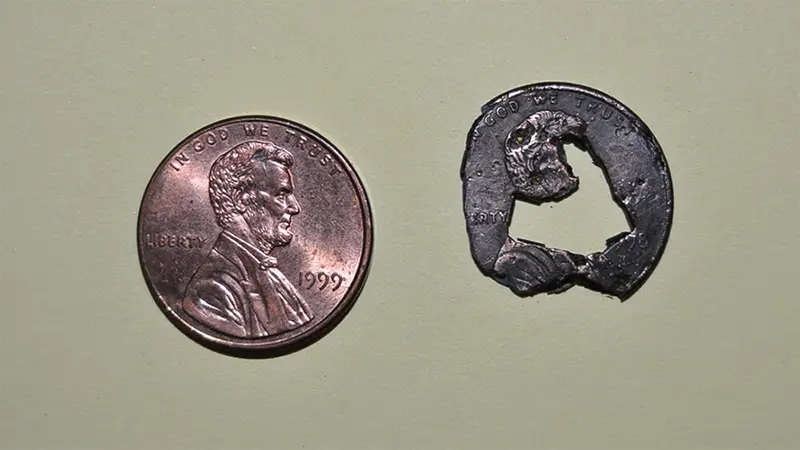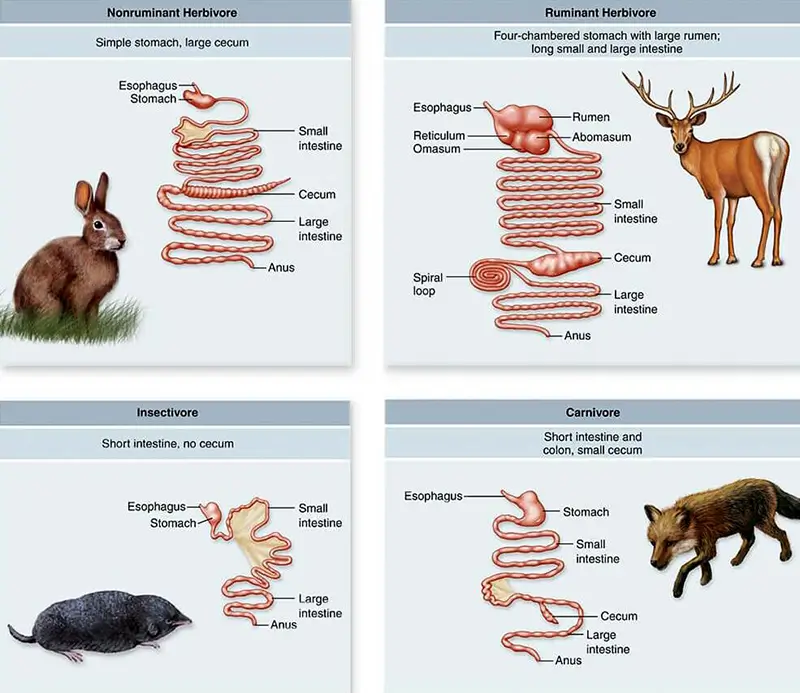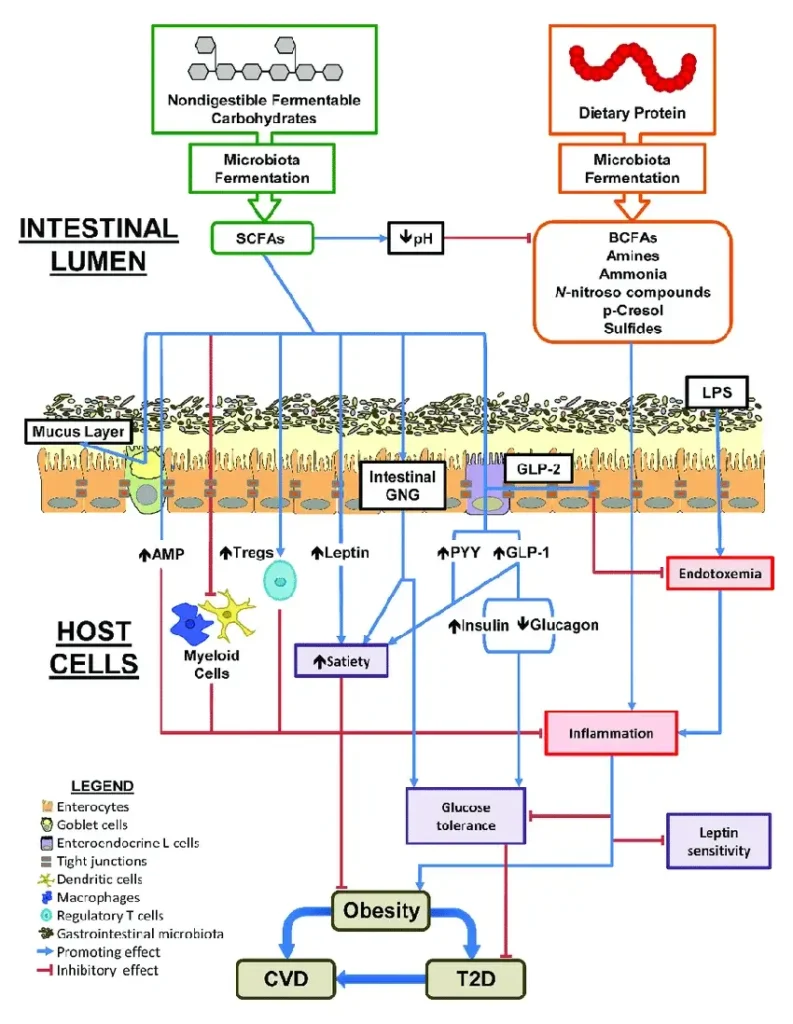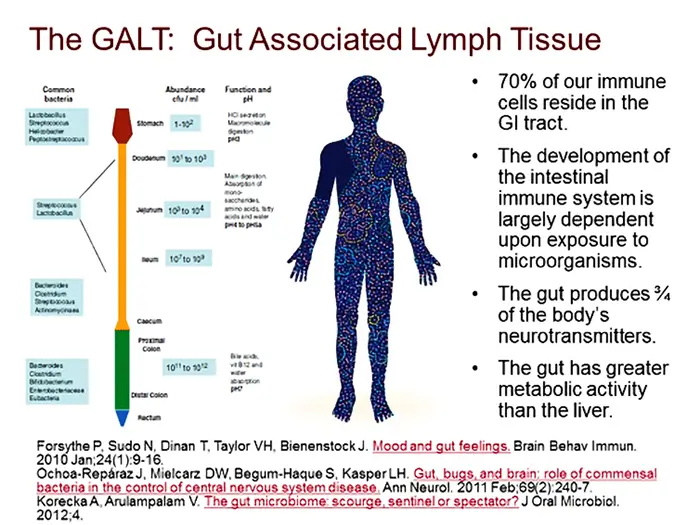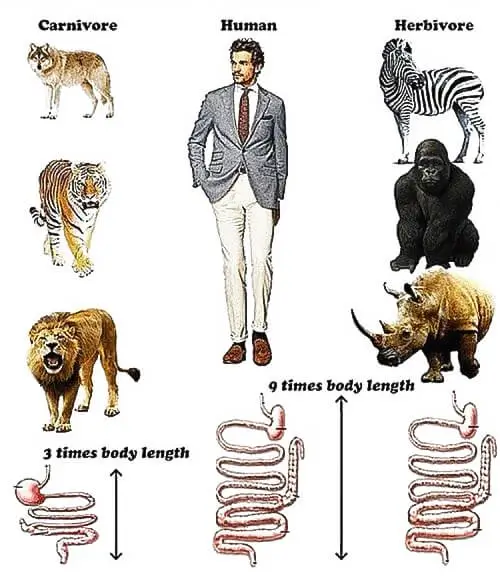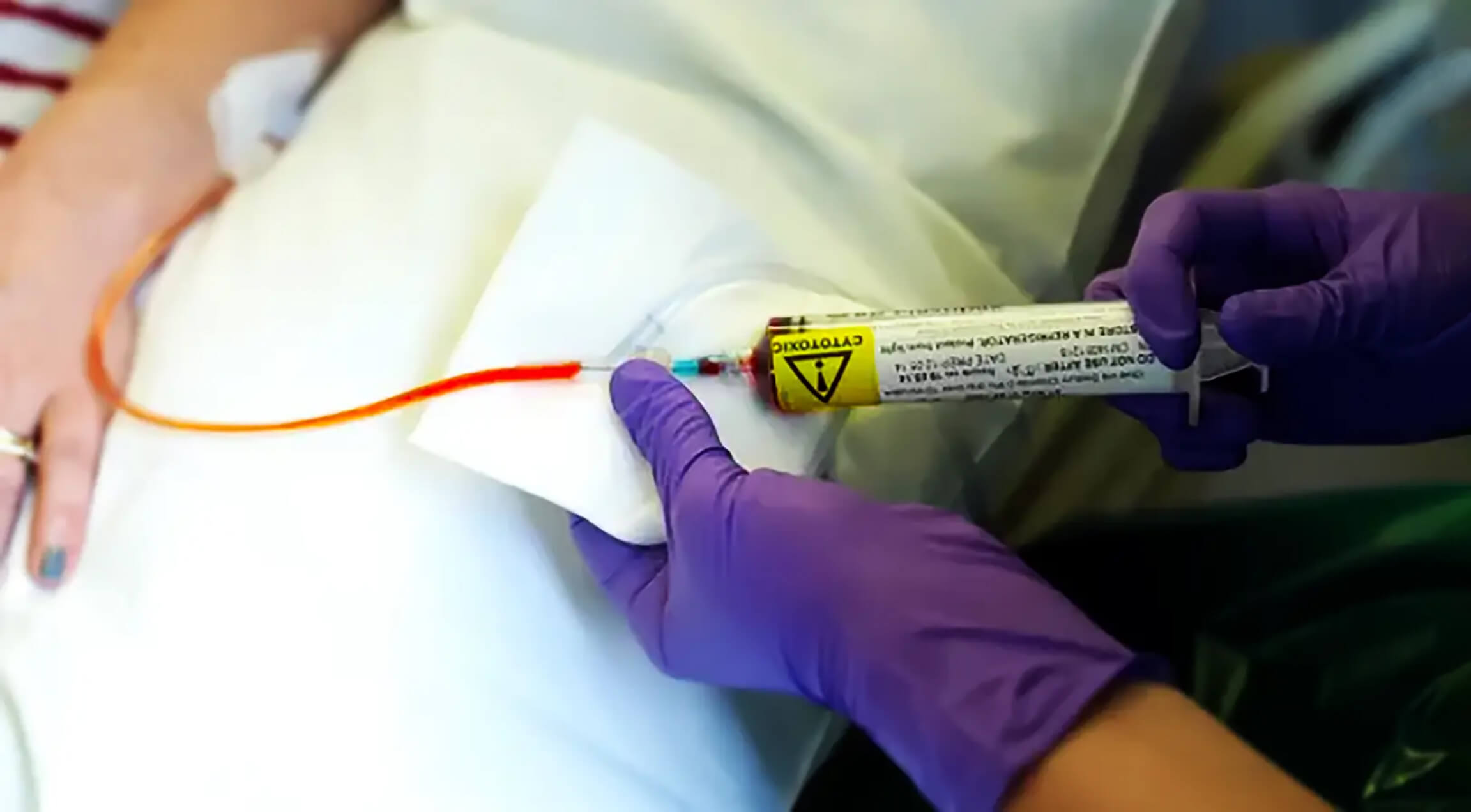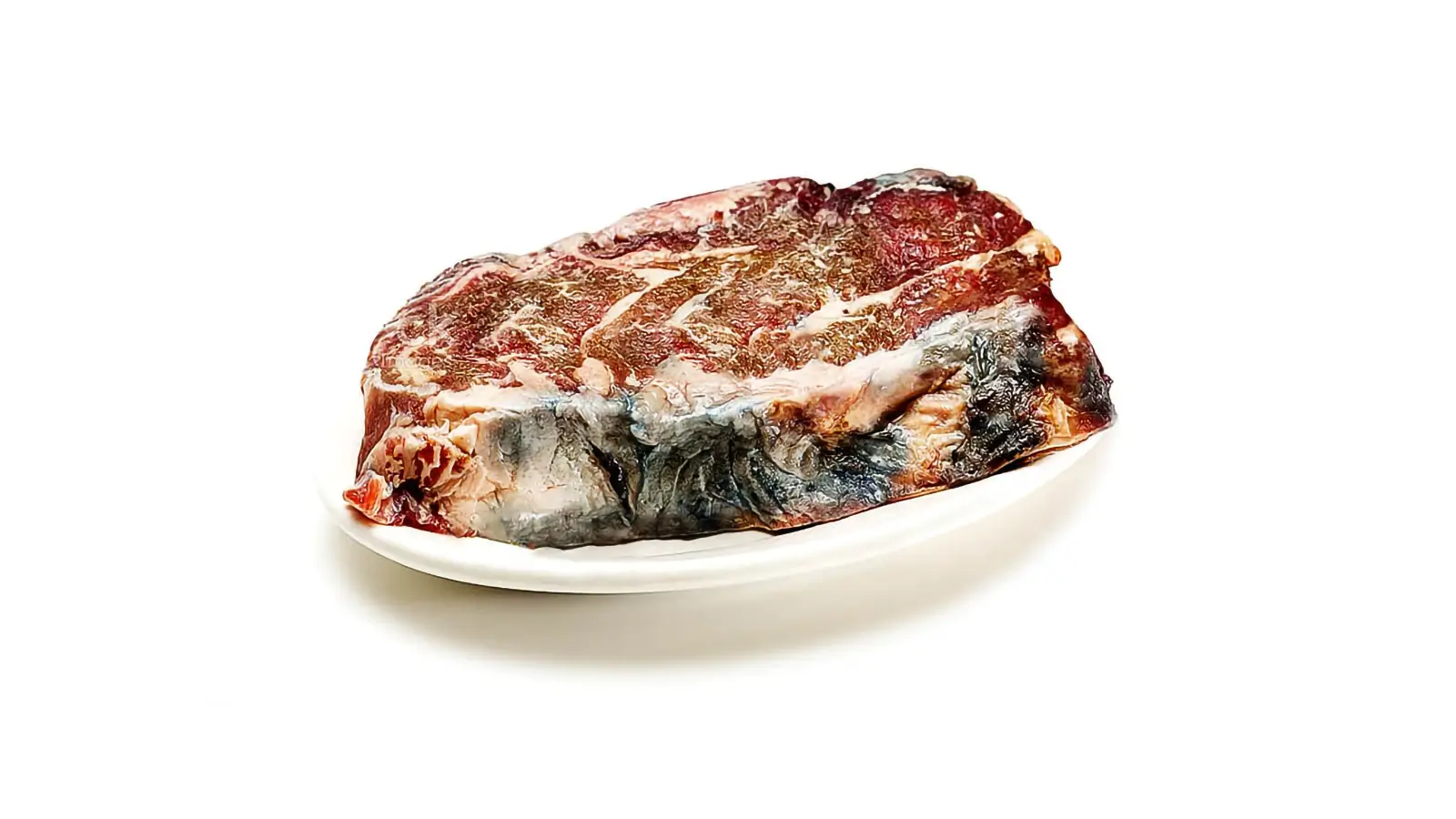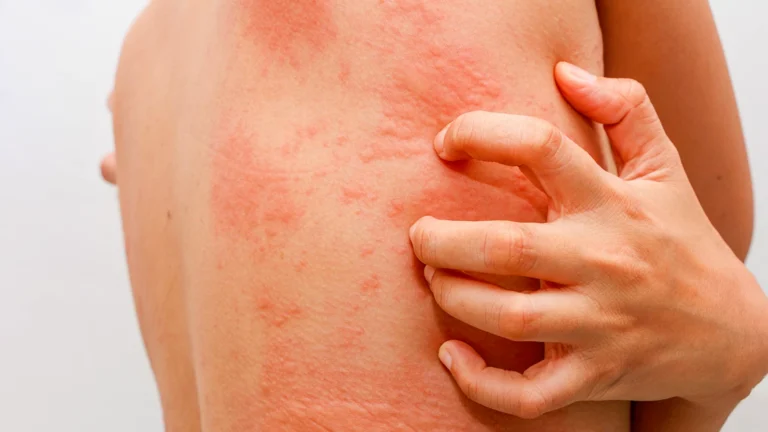The humans omnivores dilemma- Meat consumption, probiotic bacteria, inflammation, and the gut
Are humans omnivores in a true anatomical sense? There is a fundamental difference in the way the digestive tract works in plant vs meat-eating species.
Milos Pokimica
Written By: Milos Pokimica
Medically Reviewed by: Dr. Xiùying Wáng, M.D.
Updated June 9, 2023What is a healthy human diet? Are humans omnivores and are we born to consume meat?
Doctors, other experts, and conventional wisdom all agree that animal products are necessary components of a healthy diet and that humans are omnivores. The majority of people believe as well that humans are omnivores. Some argue that humans have always eaten animal products. As a result, they must be natural and healthy.
The majority of us today, or let’s say 99 percent are behavioral (we are not anatomical) omnivores but even this is false. Do you feel tempted to stop and snack on dead animals on the side of the road? Do you fantasize about slaughtering cows with your bare hands and eating them raw? If you answered “no” to these questions, you’re not even a behavioral omnivore. Chimpanzees are more behavioral omnivores even than us. In some cases, chimpanzees will actually kill and eat other monkeys and animals raw.
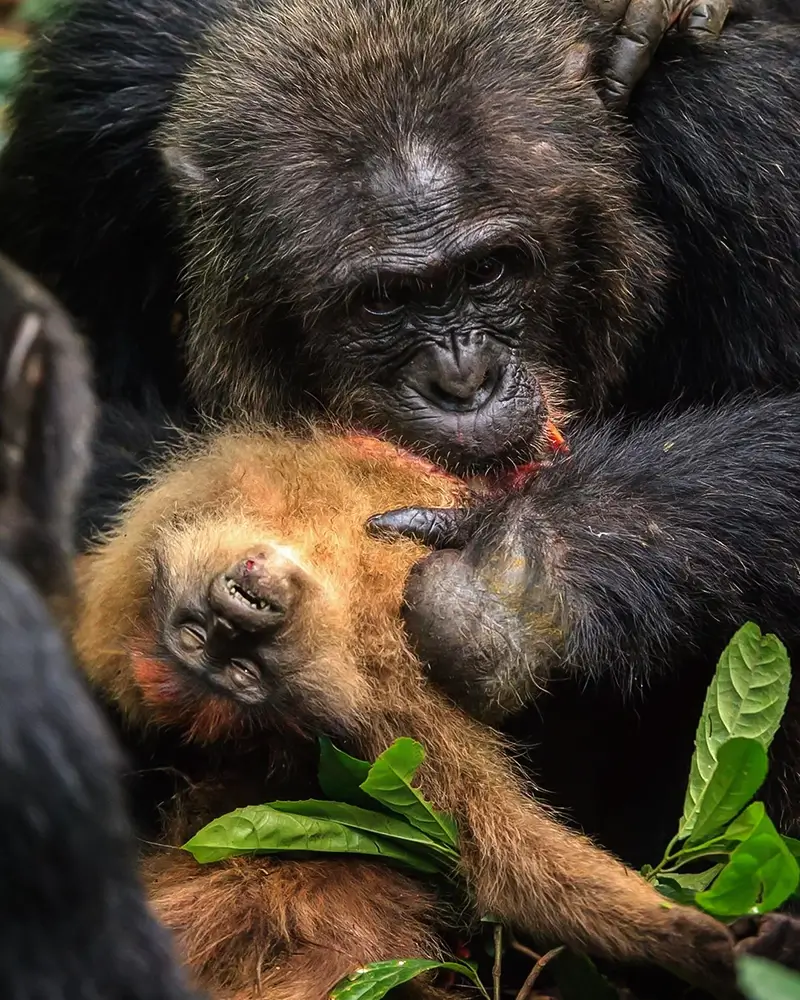
Despite the fact that many humans eat both plants and meat, earning us the dubious title of “omnivore,” we are anatomically herbivorous.
There are numerous reasons why humans would consume animal products when they are not the best foods for us but this still does not make humans omnivores. For example, as the original people migrated north, they frequently ate animal products to survive because adequate plant products were unavailable. This would make them in the same category as chimpanzees, only behavioral omnivores.
There is also significant cultural pressure to consume animal products. Many people grew up with them. Religions frequently claim that God created animals for humans to use and eat. According to the US Dietary Guidelines, animal products are part of a healthy diet. Food companies frequently publish skewed research claiming that animal products are healthy. Doctors are frequently taught that these foods are healthy.
Until recently, only the wealthy could afford to feed, raise, and slaughter animals for meat, while the rest of the population ate mostly plant foods. As a result, prior to the twentieth century, only the wealthy were routinely afflicted with diseases such as heart disease and obesity. Because animal flesh has become relatively cheap and widely available thanks to the discovery of synthetic fertilizers (it takes 7 calories from starch to make one calorie of meat), deadly diseases such as heart disease, strokes, cancer, diabetes, and obesity have spread to people from all socioeconomic backgrounds. People in less-developed areas of Asia and Africa have begun to suffer and die from diseases associated with meat-based diets as the Western lifestyle spreads. If we consume animal protein, this does not make humans omnivores automatically.
What people don’t realize is that animal protein can be digested and utilized by all herbivores. Not just humans. Humans, as intelligent, higher life forms, have the ability to change our behavior and diet. However, just because we can survive or enjoy eating animal products does not imply that they are optimal, healthy foods for humans.
Anatomy takes precedence over everything, including beliefs and food preferences. Anatomical characteristics are observable facts. They objectively demonstrate the types of foods that we and other creatures evolved to consume and thus thrive on. By comparing the anatomical features of carnivores, omnivores, and herbivores, the following discussion demonstrates that humans are herbivores (Yates et al., 2021).
Are humans omnivores in a true anatomical sense? There is a fundamental difference between the way the digestive tract works in plant-eating and meat-eating species. There are no bacteria in the colon of the meat-eating species because this type of meat-eating bacteria is very aggressive and it is not probiotic. Transit time of food through the digestive tract in meat-eaters needs to be short, no more than five to ten hours or the immune system can be overstressed when meat begins to rot in the colon. That will create inflammation and food poisoning. Also stomach acid in meat eaters is much more corrosive and their upper digestive tract is essentially sterile.
The large intestine (colon) of carnivores and omnivores is thus simple and very short since its sole purpose is to absorb salt and water. It has almost an identical width as the small intestine and, consequently, has a limited capacity to function as a reserve. Although a microbial populace is still present in large amounts in the colon of carnivores, its activities are essentially putrefactive.
In herbivorous animals, the large intestine is a highly specialized organ involved in the absorption of water and electrolytes, the production of vitamins, and the fermentation of plant fibers. The colons of herbivores are always more comprehensive than their small intestine and are relatively long and filled with probiotic bacteria. The microbiome of the colon in humans has an essential role in the normal functioning of the body.
Somehow we underrate the importance of the colon and think it is just some waste material organ. In carnivores, it is, in us, it is not. In Homo sapiens and other primates colon is subject to a different array of functions. For example, water and electrolyte absorption and vitamin production and absorption. There is also extensive bacterial fermentation of fiber that results in the different metabolites and short-chain fatty acids production and absorption from the colon that also provides significant amounts of energy and other health benefits. We are not able to utilize the entire energy value of the fiber as grazers can do but we can utilize some of it. The extent to which the fermentation and absorption of metabolites take place in the human colon has only lately started to be studied, and research into the microbiome is a new big thing because of all of the chemicals that these bacteria can secrete and the effect that they have on our bodies. It is not just the vitamins that probiotic bacteria create. Every chemical is one possible drug.
The composition of the microbiome depends on the food we eat. One type ferments fiber and another type putrefy the meat, and not all of them are probiotic.
Think about it this way, if bacteria putrefy the beans for example and we get gases as a result, it does not have a considerable interest in us. We are not her food. Bacteria like the beans only. Bacteria are organisms that are specialized to a great extent. They do not eat everything. One type eats fiber, another type eats meat. It likes you too but in a different way. You are her host, and you give her all that food and a place to live with moisture and warmth so she may help you live longer because she likes you, but in a different way, she does not like your meat.
However, when we have bacteria that putrefy corpses, then we are on the menu too. Meat is meat, and ours is tasty too. Most people do not realize that most of our immune system about 60-70% is actually in our abdomen as a vast system of lymph networks referred to as GALT (gut-associated lymphatic tissue).
Moreover, about 80% of plasma cells mainly immunoglobulin A (IgA)-bearing cells reside in GALT. We have more foreign DNA from bacteria and other symbiotic microorganisms in us than our own. In carnivore animals because of acidity most of the upper GI tract is sterile. When food reaches the colon, there can be no foreign invaders, and most of the already present species of colon microbiota are “nice” ones. When we eat meat the situation is different. The human gastrointestinal tract features anatomical modifications consistent with an herbivorous diet with low acidity and long transit time, so the potential for the growth of aggressive strains of not symbiotic bacteria is real, and if they are present in the food they can colonize the intestinal lining and cause constant presence for our immune system. The reason for the so-called balance between probiotic and non-probiotic bacteria is because of this. We always have a big chunk of our microbiome that is not symbiotic with our bodies. Eating meat feeds a large chunk of this nonsymbiotic bacteria. High animal products and low fiber consumption are not just associated with an increase in transit time and constipation. They are also associated with the rise of the low level of chronic inflammation and the risk of colon cancer.
When we consume meat it will be sitting in our colon for a long time and because we are not adapted to eating meat and animal products in higher amounts that will have negative effects and that is just how it is. Taking probiotic supplements won’t change anything in real numbers because bacteria multiply very rapidly when there is an energy source. If bacteria eat meat and meat stays in our digestive tract for days the end result is inflammation. If we over-consume animal products at regular intervals we would have a bad microbiome in our colon and a chronic rise in inflammation.
One might wonder what happens in the digestive tract of real omnivorous species. Do real anatomical omnivores have a short or long colon and do they ferment fiber? Carnivore abdomen composition is more primitive than herbivorous adaptations with higher acidity to kill off dead meat bacteria. Therefore, one would expect an omnivore to be a carnivore that shows some adaptations of the gastrointestinal tract to an herbivorous diet. This is precisely the situation we found in the raccoons, the bears, and some members of the canine families. Bears, for example, are mainly herbivores with 70-80% of their diet consisting of plant foods. Because bears include significant amounts of meat in their diet, they must maintain the anatomical characteristics that allow them to capture and kill their prey. Therefore, bears have a maxillary structure, musculature, and dentition that allow them to apply the forces necessary to kill and dismember their prey even though most of their diet consists of plant foods. The most important adaptation to an herbivorous diet in bears is the modification of their teeth. The bears kept the incisors, the large canines, and the premolar shearers of a carnivore; but the molars were square with rounded cusps to crush and grind. They still have high acidity and high resistance filter and short colon. They cannot digest the fibrous vegetation and, therefore, are highly selective. Their diet is dominated mainly by aromatic herbs, tubers, and berries. Many scientists believe that the reason why bears hibernate is due to their primary food (succulent vegetation) are not available in the cold winters of the north. The small intestine is short (less than five times the length of the body) like that of pure carnivores, and the colon is simple, soft, and short.
References:
- Arumugam, M., Raes, J., Pelletier, E., Le Paslier, D., Yamada, T., Mende, D. R., Fernandes, G. R., Tap, J., Bruls, T., Batto, J. M., Bertalan, M., Borruel, N., Casellas, F., Fernandez, L., Gautier, L., Hansen, T., Hattori, M., Hayashi, T., Kleerebezem, M., Kurokawa, K., … Bork, P. (2011). Enterotypes of the human gut microbiome. Nature, 473(7346), 174–180. https://doi.org/10.1038/nature09944
- Moore, W. E., & Moore, L. H. (1995). Intestinal floras of populations that have a high risk of colon cancer. Applied and environmental microbiology, 61(9), 3202–3207. https://doi.org/10.1128/aem.61.9.3202-3207.1995
- Tuohy, K. M., Conterno, L., Gasperotti, M., & Viola, R. (2012). Up-regulating the human intestinal microbiome using whole plant foods, polyphenols, and/or fiber. Journal of agricultural and food chemistry, 60(36), 8776–8782. https://doi.org/10.1021/jf2053959
- Hakansson, A., & Molin, G. (2011). Gut microbiota and inflammation. Nutrients, 3(6), 637–682. https://doi.org/10.3390/nu3060637
- Ferguson J. F. (2013). Meat-loving microbes: do steak-eating bacteria promote atherosclerosis?. Circulation. Cardiovascular genetics, 6(3), 308–309. https://doi.org/10.1161/CIRCGENETICS.113.000213
- Hazen, S. L., & Brown, J. M. (2014). Eggs as a dietary source for gut microbial production of trimethylamine-N-oxide. The American journal of clinical nutrition, 100(3), 741–743. https://doi.org/10.3945/ajcn.114.094458
- Glick-Bauer, M., & Yeh, M. C. (2014). The health advantage of a vegan diet: exploring the gut microbiota connection. Nutrients, 6(11), 4822–4838. https://doi.org/10.3390/nu6114822
- Kellow, N. J., Coughlan, M. T., & Reid, C. M. (2014). Metabolic benefits of dietary prebiotics in human subjects: a systematic review of randomised controlled trials. The British journal of nutrition, 111(7), 1147–1161. https://doi.org/10.1017/S0007114513003607
- Fellows Yates, J. A., Velsko, I. M., Aron, F., Posth, C., Hofman, C. A., Austin, R. M., Parker, C. E., Mann, A. E., Nägele, K., Arthur, K. W., Arthur, J. W., Bauer, C. C., Crevecoeur, I., Cupillard, C., Curtis, M. C., Dalén, L., Carlos, J., Drucker, D. G., Escribano Escrivá, E., . . . Warinner, C. (2021). The evolution and changing ecology of the African hominid oral microbiome. Proceedings of the National Academy of Sciences, 118(20), e2021655118. https://doi.org/10.1073/pnas.2021655118
Related Posts
Do you have any questions about nutrition and health?
I would love to hear from you and answer them in my next post. I appreciate your input and opinion and I look forward to hearing from you soon. I also invite you to follow us on Facebook, Instagram, and Pinterest for more diet, nutrition, and health content. You can leave a comment there and connect with other health enthusiasts, share your tips and experiences, and get support and encouragement from our team and community.
I hope that this post was informative and enjoyable for you and that you are prepared to apply the insights you learned. If you found this post helpful, please share it with your friends and family who might also benefit from it. You never know who might need some guidance and support on their health journey.
– You Might Also Like –

Learn About Nutrition
Milos Pokimica is a doctor of natural medicine, clinical nutritionist, medical health and nutrition writer, and nutritional science advisor. Author of the book series Go Vegan? Review of Science, he also operates the natural health website GoVeganWay.com
Medical Disclaimer
GoVeganWay.com brings you reviews of the latest nutrition and health-related research. The information provided represents the personal opinion of the author and is not intended nor implied to be a substitute for professional medical advice, diagnosis, or treatment. The information provided is for informational purposes only and is not intended to serve as a substitute for the consultation, diagnosis, and/or medical treatment of a qualified physician or healthcare provider.NEVER DISREGARD PROFESSIONAL MEDICAL ADVICE OR DELAY SEEKING MEDICAL TREATMENT BECAUSE OF SOMETHING YOU HAVE READ ON OR ACCESSED THROUGH GoVeganWay.com
NEVER APPLY ANY LIFESTYLE CHANGES OR ANY CHANGES AT ALL AS A CONSEQUENCE OF SOMETHING YOU HAVE READ IN GoVeganWay.com BEFORE CONSULTING LICENCED MEDICAL PRACTITIONER.
In the event of a medical emergency, call a doctor or 911 immediately. GoVeganWay.com does not recommend or endorse any specific groups, organizations, tests, physicians, products, procedures, opinions, or other information that may be mentioned inside.
Editor Picks –
Milos Pokimica is a health and nutrition writer and nutritional science advisor. Author of the book series Go Vegan? Review of Science, he also operates the natural health website GoVeganWay.com
Latest Articles –
Top Health News — ScienceDaily
- Why consciousness exists at allon December 15, 2025
Consciousness evolved in stages, starting with basic survival responses like pain and alarm, then expanding into focused awareness and self-reflection. These layers help organisms avoid danger, learn from the environment, and coordinate socially. Surprisingly, birds show many of these same traits, from subjective perception to basic self-awareness. This suggests consciousness is far older and more widespread than once believed.
- AI found a way to stop a virus before it enters cellson December 15, 2025
Researchers discovered a hidden molecular “switch” that herpes viruses rely on to invade cells. By combining AI, simulations, and lab experiments, they identified and altered a single amino acid that shut down viral entry. What once might have taken years was achieved far faster using computational tools. The findings open new possibilities for designing future antiviral treatments.
- New study shows some plant-based diets may raise heart disease riskon December 15, 2025
Researchers tracking over 63,000 adults found that high-quality, minimally processed plant foods significantly reduce cardiovascular risk. But when those plant foods are ultra-processed, the advantage disappears—and can even backfire. Some ultra-processed plant diets increased risk by 40%. The study urges a shift toward whole, naturally nutrient-rich plant foods.
- These simple habits could make your brain 8 years younger, study findson December 15, 2025
New research shows that your brain’s “true age” can shift dramatically depending on how you live, with optimism, restorative sleep, stress management, and strong social support acting like powerful anti-aging tools. Using advanced MRI-based brain-age estimates, scientists found that people with multiple healthy lifestyle factors had brains up to eight years younger than expected — even among those living with chronic pain.
- Anxiety and insomnia linked to sharp drops in key immune cellson December 15, 2025
Natural killer cells act as the immune system’s rapid-response team, but the stress of anxiety and insomnia may be quietly thinning their ranks. A study of young women in Saudi Arabia found that both conditions were linked to significantly fewer NK cells—especially the circulating types responsible for destroying infected or abnormal cells. As anxiety severity increased, NK cell levels dropped even further, suggesting a stress-driven weakening of immune defenses.
- Cannabis compounds show unexpected power against ovarian canceron December 15, 2025
Scientists have discovered that key compounds from cannabis—CBD and THC—show surprisingly strong effects against ovarian cancer cells. Used together, they slow cell growth, reduce colony formation, and may even block the cancer’s ability to spread. Even more promising, the treatment caused minimal harm to healthy cells and appears to work by restoring a disrupted signaling pathway that fuels tumor growth.
- Mayo Clinic neurosurgeon reveals 8 back pain myths to stop believingon December 15, 2025
Back pain is wrapped in persistent myths, but many are far from the truth. From misconceptions about heavy lifting and bed rest to confusion over posture, exercise, and surgery, Dr. Meghan Murphy breaks down what really causes pain and what actually helps. Her insights reveal that everyday habits, movement, and smart prevention often make a bigger difference than people realize.
PubMed, #vegan-diet –
- Healthful and Unhealthful Plant-Based Diets and Their Association with Cardiometabolic Targets in Women Diagnosed with Breast Cancer: A Cross-Sectional Analysis of a Lifestyle Trialon December 11, 2025
CONCLUSIONS: Maintaining cardiometabolic risk factors within normal ranges is clinically relevant in BCS, and this may be more likely when a plant-based diet is consumed, especially if low in unhealthy plant foods.
- Dietary and Lifestyle Patterns and Their Associations with Cardiovascular and Inflammatory Biomarkers in Vegans, Vegetarians, Pescatarians, and Omnivores: A Cross-Sectional Studyon December 11, 2025
Background: Plant-based diets are associated with reduced cardiometabolic risk, yet the influence of lifestyle behaviors on these benefits remains insufficiently understood. Objective: To assess the combined impact of dietary patterns and lifestyle behaviors on body composition, lipid profiles, and inflammatory biomarkers in healthy young adults. Methods: In this cross-sectional study, 155 participants aged 18-39 years were categorized into four dietary groups: vegans (n = 48), vegetarians (n […]
- Functional and Nutritional Properties of Lion’s Mane Mushrooms in Oat-Based Desserts for Dysphagia and Healthy Ageingon December 11, 2025
Hericium erinaceus (Lion’s Mane mushroom) is a medicinal species recognised for its neuroprotective and antioxidant properties. This study investigated its potential as a functional ingredient in oat milk-based desserts formulated for individuals with dysphagia. Freeze-dried Lion’s Mane powder (LMP), containing high-quality protein (~16%, amino acid score 88%), dietary fibre (~31%), and phenolic compounds (72.15 mg GAE/g), was incorporated at varying levels using gelatin or iota-carrageenan […]
- “A football team with no midfield”: A qualitative analysis of anti-vegan stigma in Italyon December 7, 2025
A growing body of research has demonstrated the prevalence of unfavourable attitudes towards individuals who adhere to a vegan diet and has provided empirical evidence to support the existence of an anti-vegan ideology. The present study aims to contribute to extant knowledge by examining the social perception of veganism and vegans in Italy. Italy is a nation characterised by a traditional culture of food that serves as a significant catalyst for collective identification and national pride….
- Plant-based dietary index on the Mediterranean and a vegan diet: a secondary analysis of a randomized, cross-over trialon December 5, 2025
CONCLUSION: These findings suggest that, replacing animal products even with the “unhealthful” plant-based foods on a vegan diet was associated with weight loss.
Random Posts –
Featured Posts –
Latest from PubMed, #plant-based diet –
- Identification of effective plant-based oils for use in aquafeed: An evaluation of impact on gamete quality and developmental success using zebrafish (Danio rerio) as a screening organismby Seyed-Mohammadreza Samaee on December 14, 2025
To evaluate the effectiveness of zebrafish as a screening system for identifying appropriate plant oils (POs) for aquafeed, Artemia nauplii (AN) were enriched with three single- cultivar olive oils (OO): Koroneiki, Parseh, and Arghavan. The resulting AN (ANKor, ANPar, ANArg, and AN36 [36 h starved AN, control]) were then fed to 360 fish (3.5 cm) for one month. The fatty acid (FA) profile of the AN was reflected in the ova and influenced both sperm motility and density, which in turn affected […]
- The Effect of Dietary Interventions on Human Vascular Function in the Context of Acute Psychological Stress: A Scoping Reviewby Rosalind Baynham on December 14, 2025
Episodes of acute psychological stress increase the risk for cardiovascular diseases, partially through stress-induced impairments in vascular function. During psychologically stressful periods, individuals are more likely to consume unhealthy foods and fewer fruits and vegetables. Yet, the impact of dietary choices and their nutritional composition on vascular function in the context of psychological stress is unclear. In this scoping review, comprehensive database searches were carried out […]
- Plant-based diets, gut microbiota, blood metabolome, and risk of colorectal, liver and pancreatic cancers: results from a large prospective cohort study of predominantly low-income Americansby Fangcheng Yuan on December 14, 2025
CONCLUSIONS: A diet high in healthy plant foods and low in animal foods was inversely associated with liver cancer risk and with CRC risk among screening-naïve participants. These associations may be partly mediated through gut microbiota and systemic metabolism.
- Vegetarian diet and likelihood of becoming centenarians in Chinese adults aged 80 years or older: a nested case-control studyby Yaqi Li on December 14, 2025
CONCLUSIONS: Targeting individuals of advanced age (80+ years) in China, we found that individuals following vegetarian diet had lower likelihood of becoming centenarians relative to omnivores, underscoring the importance of a balanced high-quality diet with animal- and plant-derived food composition for exceptional longevity, especially in the underweight oldest-old.
- Priority of nutrition and exercise in depression management: triangulating mini-review of past and recent evidence with clinical practice guidelinesby Shannon Rogers on December 14, 2025
CONCLUSIONS: Disparities that exist in leading depression management guidelines vis-à-vis inclusion of evidence-informed nutrition and PA/PE recommendations, warrant reconciliation. Evidence supporting anti-depressant WFPB nutrition and limiting pro-inflammatory animal-sourced food and UPF and supporting anti-inflammatory aerobic exercise and resistance training warrants being translated into national/international depression management guidelines as consistently as recommendations for…
- The effect of a diet based on vegetable and dairy protein on biochemical and functional indicators of sarcopenia in patients with liver cirrhosis: a randomized controlled trialby Mahdiyeh Taghizadeh on December 13, 2025
CONCLUSIONS: In conclusion, a vegetable and dairy protein-based diet effectively inhibited significant elevations in ammonia levels compared to the standard diet in persons with liver cirrhosis; however, anthropometric parameters and muscle function did not differ between two groups.
